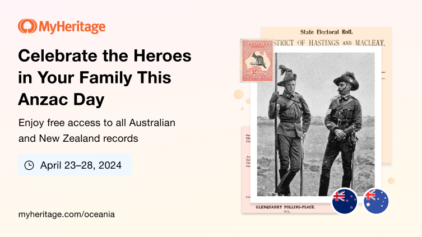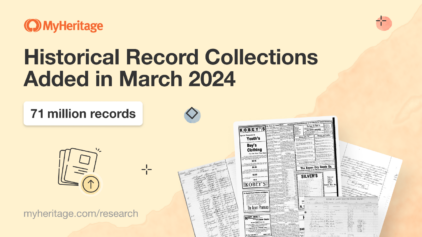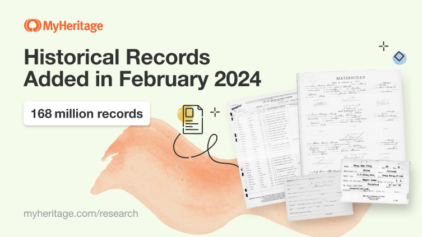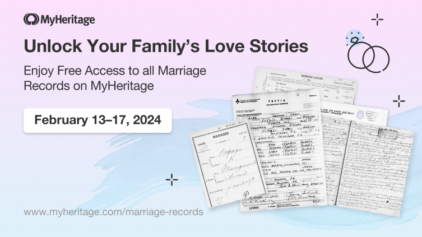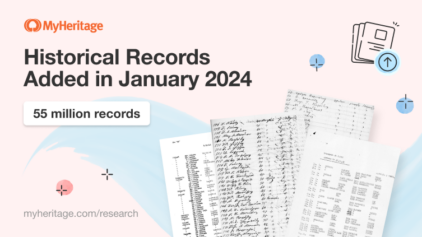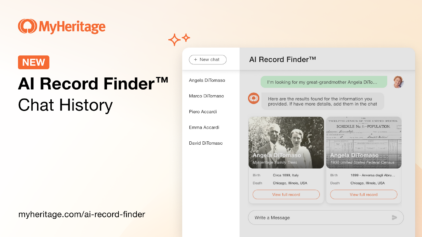

Here at MyHeritage, we are dedicated to helping you uncover your family’s unique story, and part of that includes our efforts to continually grow our collection of historical records. To help you stay informed of these ongoing updates, we recently started a new Facebook Live series. In these biweekly sessions taking place on the first and third Tuesday of every month on the MyHeritage Facebook page, our directors of content, Mike Mansfield and Myko Clelland, showcase our newest additions and share useful tips for exploring your family’s past.
In a recent session, Myko shared several valuable tips on making the most of the wealth of historical records available on MyHeritage. Here’s what he suggested:
1. Death is not the end
Don’t stop searching when you’ve found one death record: be sure to explore burial and obituary records as well as supplementary records like wills or probate records. These can provide further information and context about your ancestors.
2. Dig deeper into marriages
When you find a marriage record, consider looking for associated documents like banns, marriage licenses, or newspaper announcements. There could be numerous records related to a single event, and each one can add to your understanding.
3. Move beyond birth records
After discovering a birth record, search for baptisms or birth announcements in newspapers. Just like with death and marriage records, various documents can surround these key life events.
4. Don’t discount family trees
With countless users adding to their family trees on MyHeritage, you might find valuable information about your own lineage. Uploading your tree can help you connect with distant cousins who may have already added the details you’re searching for. Be cautious, however, because the information may be inaccurate — it’s always best to back up secondary sources like family trees with information from a primary source, like a vital record.
5. Check the collection catalog
Our collection catalog is continually updated with new and revised collections. Sorting by ‘last updated’ will reveal the latest additions, helping you stay on top of new possibilities for your research.
6. Use the Census Helper™
MyHeritage’s Census Helper™ is a great tool to streamline your search. It scans your family tree and suggests potential matches in specific censuses. Learn more about how it works in this article from the MyHeritage Knowledge Base: Jump-start Your 1950 Census Research With Census Helper™
By employing these tips and keeping an eye on our Facebook Live series, you can ensure that you’re fully utilizing the potential of MyHeritage’s ever-growing historical records. Discover the stories waiting to be told and get closer to your roots, one record at a time.
Be sure to tune in to our next Facebook Live in this series on August 15, 2023! Just visit our Facebook page at 1 P.M. EST — no need to register in advance.



